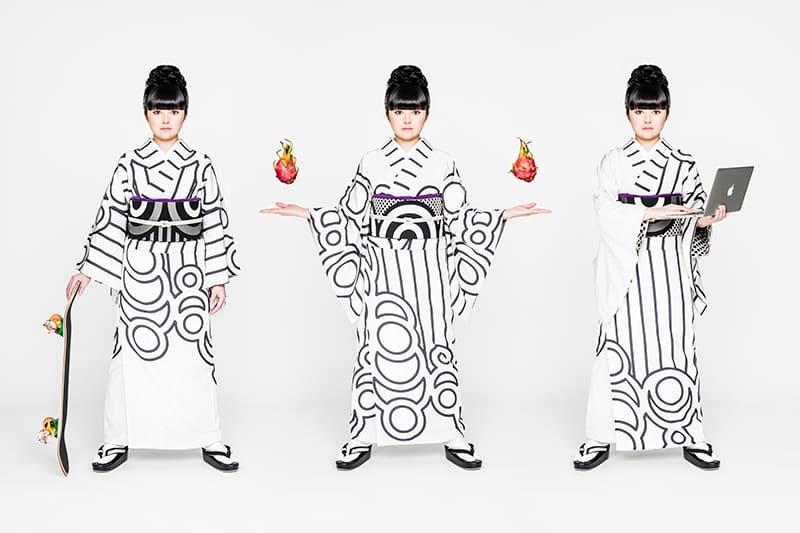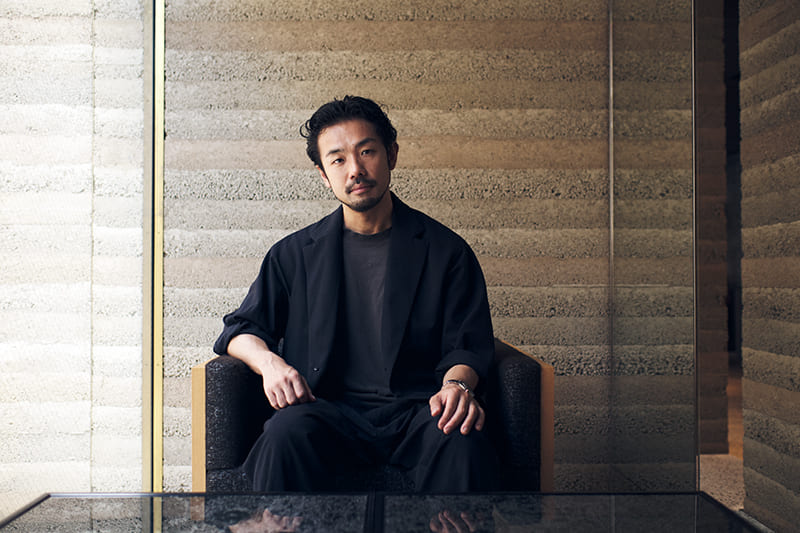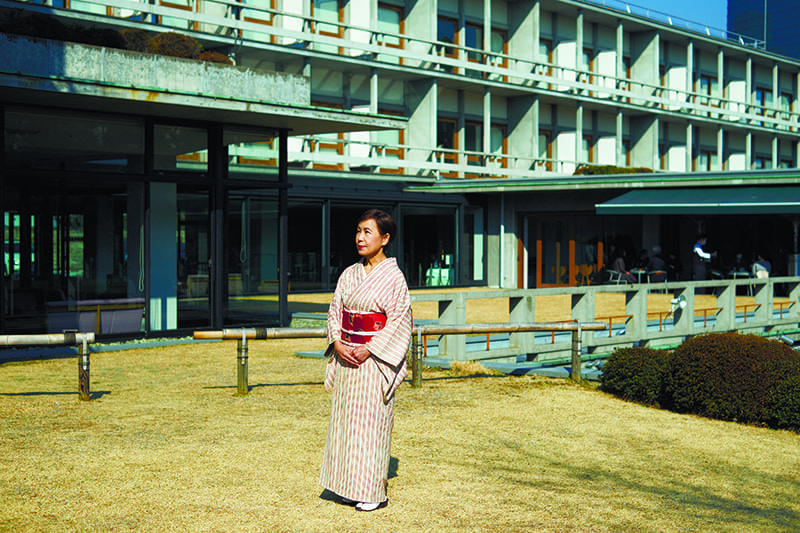September 27, 2024
Japan’s endangered traditional kimono culture
PROBLEM-SOLVING

COURTESY: NISHIMURA ORIMONO
Foreign visitors to Japan are often surprised by how few Japanese people wear kimonos. In tourist areas, those seen walking around in kimonos are often foreign or Japanese tourists wearing rented ones.
According to the Yano Research Institute publication Kimono Industry 2024, retail sales of kimonos have been declining since their peak of about ¥1.8 trillion ($12.5 billion) in 1981, dropping to ¥224 billion in 2023. So over about 40 years, the kimono market has shrunk to roughly one-eighth or one-ninth of its peak size — a significant contraction.
Why has this happened? We spoke with kimono researcher Ko Ishizaki about the challenges facing Japan’s traditional kimono culture. Ishizaki, whose father was also a kimono researcher, worked as a store manager and buyer for a major kimono chain before becoming independent. He currently works in marketing and as a director in the kimono industry while also conducting academic research.
“Before delving into the main topic,” he said, “let me start with the history of Japanese textiles, which were woven as far back as the Jomon Period, over 3,000 years ago. However, the beginning of the textile techniques used in current kimonos dates back to the sixth century when Buddhism, along with textiles and advanced weaving techniques, was introduced from the Korean Peninsula. At that time, Buddhism was not just a religion; it also encompassed cutting-edge technologies including astronomy, medicine and architecture, and textiles were another part of that package. In fact, automotive companies like Toyota and Suzuki, which have driven Japan’s postwar economy, originally started as loom manufacturers. So as you can see, the textile industry has been involved throughout history with cutting-edge technology.”
Our conversation then moved on to the 16th century.
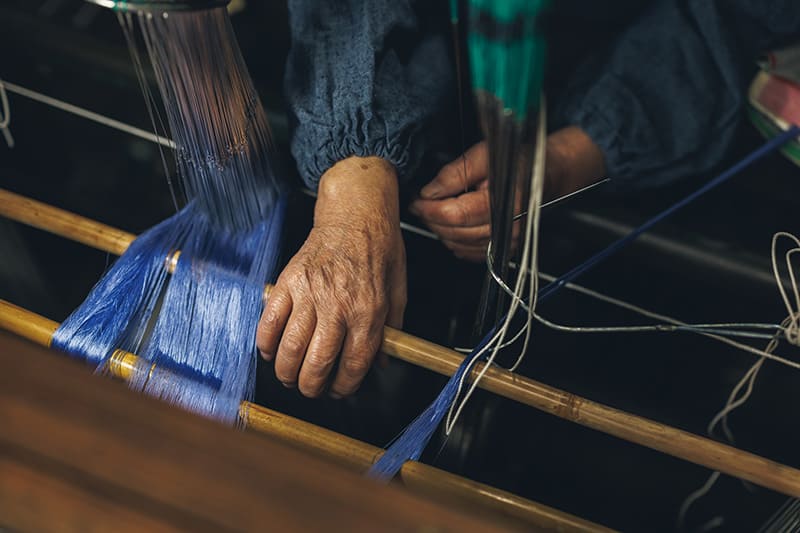
COURTESY: NISHIMURA ORIMONO
“By the 16th century, before the Edo Period began, traditional textiles from various parts of Japan, now designated as Important Intangible Cultural Properties, had already emerged. These included kasuri (ikat) with roots in Southeast Asian countries like Thailand and Indonesia, and cotton textiles whose seeds and production methods were introduced by shipwrecked Indian vessels, showcasing a wide variety. Homespun tsumugi made from waste cocoons that couldn’t be shipped was used for personal clothing, as were cotton and hemp. Silk textiles, initially used for Buddhist decorations and by rulers and wealthy merchants, gradually spread to become formal wear for the middle class. While there were fashion changes in form over time, such as the jūni-hitoe of the Heian Period and the kosode of the Edo Period, basically all Japanese people wore kimonos.”
However, since the end of the Edo Period (1603-1868) with its isolationist policy, through the Meiji Era (1868-1912), when Westernization was considered equivalent to modernization, and following World War II, Western-style clothing became increasingly common over a period of 80 years. Now kimonos are for many Japanese no longer everyday wear, but attire worn only on special occasions like weddings and coming-of-age ceremonies.
“The kimono industry bears some responsibility for this. Many people in my parents’ and grandparents’ generations enjoyed wearing cotton and wool kimonos as everyday clothes. However, because these were low-priced items, the industry focused on manufacturing and selling silk kimonos for formal occasions, which cost several hundred thousand yen each, to secure sales for their postwar recovery. This led to an image among the Japanese people that kimonos were luxury items. This worked well during economic boom times, but as lifestyles changed and the economy worsened, the Japanese rapidly moved away from kimonos.”
Alongside the decline in kimono sales, there has been a decline in the number of kimono craftspeople. With fewer sericulture farmers producing silk, as well as the artisans who handle processes like spinning, dyeing and weaving, many traditional textiles are disappearing. At this rate, a traditional culture symbolizing Japan may vanish. Driven by this sense of crisis, Ishizaki is taking on new challenges. Since participating in a project that showcased kimonos at New York Fashion Week for the first time in 2016, through Kimono Artisan Kyoto, a group formed by 10 dyeing and weaving brands, he has been involved in projects to promote kimonos abroad through cultural exchanges. He is furthermore working on strategies to ensure the survival of traditional Japanese textiles by expanding their applications, such as using fabrics once primarily used for kimonos to create interior goods, Western-style clothing, bags and other accessories.
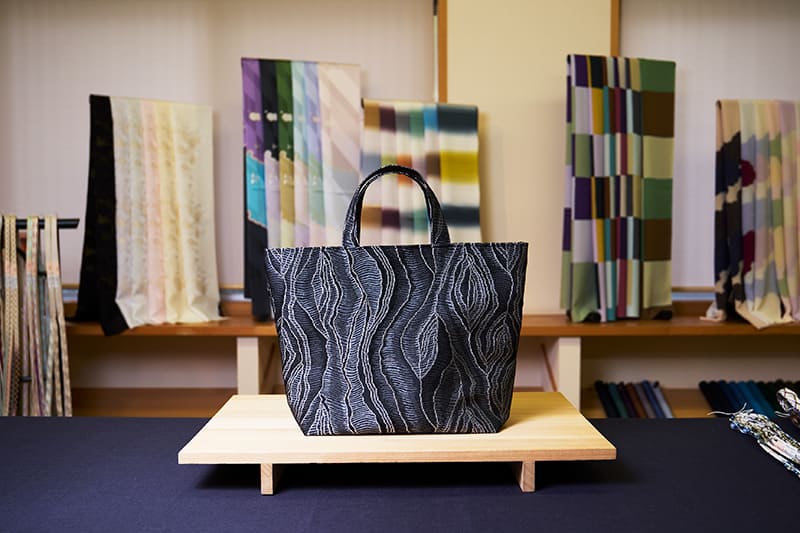
PHOTO: KOUTARO WASHIZAKI
In addition to their traditional Japanese accessories, the Kyoto-based brand Sacra, with which Ishizaki is involved in product planning, is producing down jackets woven using Nishijin-ori weaving techniques with recycled yarn from plastic bottles, targeting environmentally conscious Western markets. They are also working on creating yarn from resources such as corncobs and fruit peels. Moreover, Nishimura Orimono, a company in Fukuoka Prefecture that Ishizaki knows well, has seen its traditional hakata-ori fabric used in decorations in the Ritz-Carlton hotel in Fukuoka. These efforts are thus gradually showing results.
However, what Ishizaki considers most important is preserving traditional kimono culture and passing it on to future generations. One of his efforts toward that end is supporting young sericulture farmers.
“In the 1920s, there were 2.21 million sericulture farms in Japan. Now there are only 146, and it’s said that in five years, due to reasons such as aging, that number will decrease to 69. I believe this is our last chance, so I intend to do everything in my power to prevent the extinction of Japanese sericulture farms and to produce the highest-quality domestic cocoons.”
Additionally, because the process of putting on a kimono is complex, many Japanese people who do not regularly wear kimonos cannot dress themselves in one. This barrier to casual wear is thought to be another reason for the decline in kimono use. Ishizaki is thus also focusing on efforts to increase the number of professional kimono dressers.

COURTESY: NISHIMURA ORIMONO
“Japanese textiles and kimonos are not just a wonderful clothing culture, they are works of art and craft. I want foreigners and, more importantly, Japanese people to appreciate their charm.”
Kimono culture, which can be considered part of Japan’s identity, is now at a major crossroads.
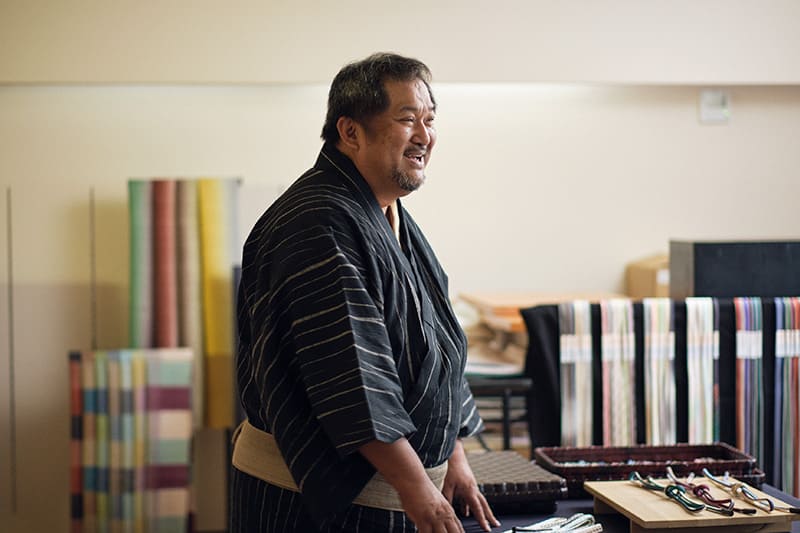
KO ISHIZAK
Ishizaki was born in 1966 in Tokyo as the second son of Tadashi Ishizaki, a renowned kimono and clothing researcher of the Showa Era. He is a kimono researcher too, in addition to being a producer and marketing director in the kimono industry. Besides product planning for kimono retailers and manufacturers and providing guidance to production areas, he serves on research committees for various government administrations. He also dedicates himself to researching textile history and pattern studies. He is the editor and author of “A Dictionary of Japanese Patterns: The History of Kimono Designs” (Kodansha Academic Library).
日本の伝統文化、「きもの」が直面する課題。
日本の文化的なアイデンティティとも言える「きもの」が岐路に立っている。そのきもの文化が直面する課題について、きもの研究家の石崎功に話を聞いた。
「形としては平安時代の十二単や江戸時代の小袖など、時代によってファッションの変化はありますが、基本的には日本人は皆、きものを着ていました」。
だが、明治時代、第二次世界大戦を経て洋装が一般化し、きものは多くの日本人にとって、日常着ではなく、特別な日にしか身につけない装いとなってしまった。
「業界が戦後の復興のため、売り上げを確保しようと1枚数十万円以上はする晴れ着としての絹のきものの製造・販売に力を入れるようになったことにも原因があります」。
その結果、着物作りを担う職人が減り、消えていく伝統織物も少なくない。このままでは日本を象徴する伝統文化がなくなってしまう。そんな危機感から、石崎は海外への販路拡大や文化交流、若い養蚕農家の応援、プロの着付け師を増やす活動に力を入れている。
Return to Sustainable Japan Magazine Vol. 40 article list page

